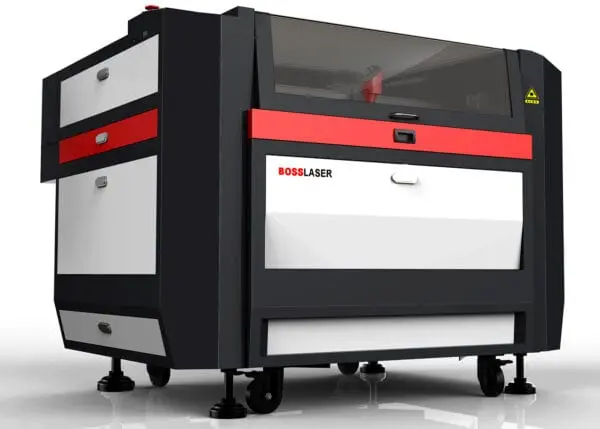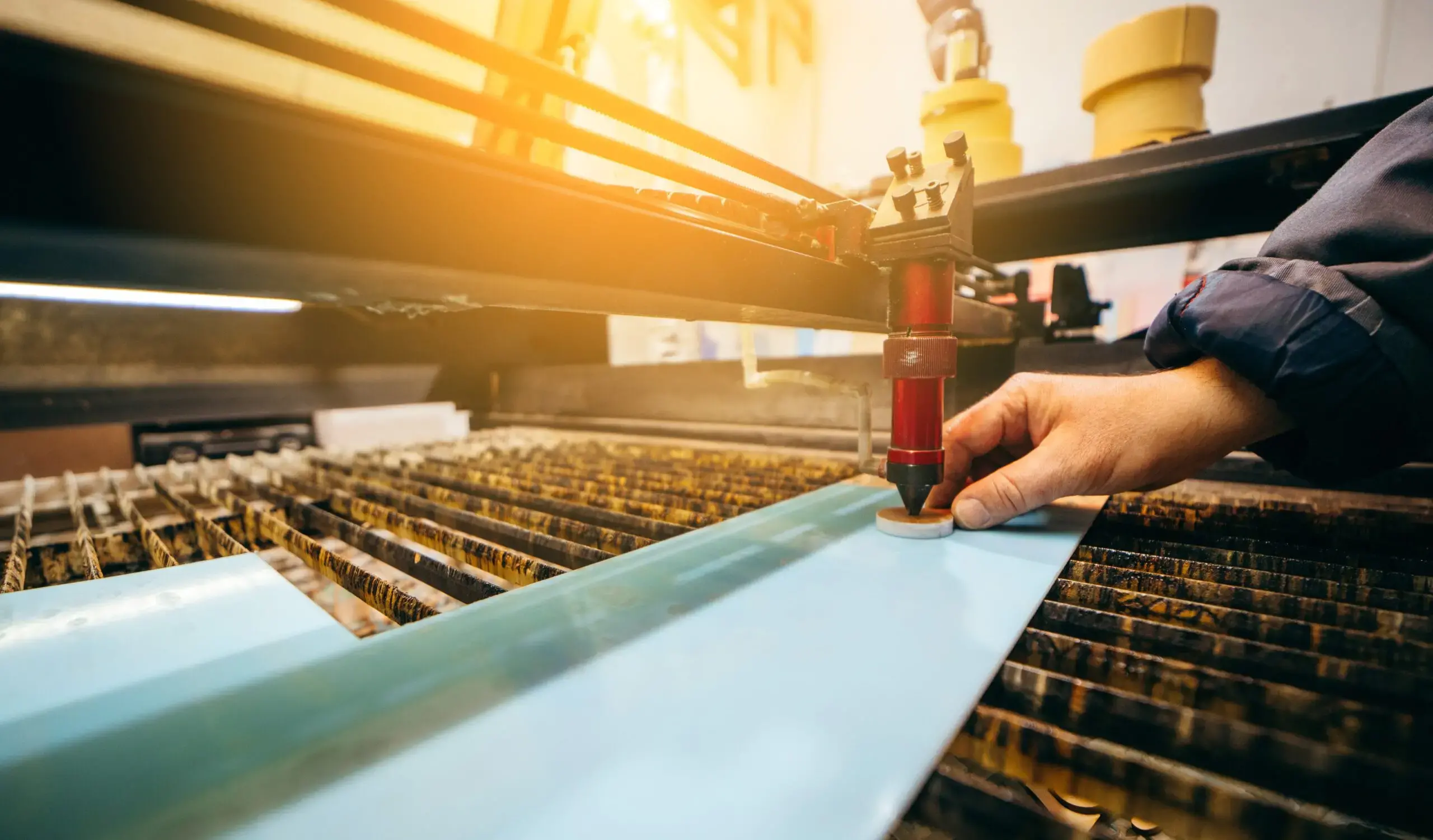CO2 laser engraving utilizes a high-powered laser beam to mark and engrave various materials with precision and detail. This technology continues to revolutionize the engraving industry, offering unparalleled speed, versatility, and efficiency.
CO2 lasers operate at a wavelength of 10.6 micrometers which allows the beam to be highly absorbed on organic materials such as wood, acrylic, leather, and paper. This versatility has made CO2 laser engraving a preferred choice for a various applications, from personalized gifts and signage to industrial manufacturing and prototyping.
Choosing the Right Materials
Selecting the appropriate materials is crucial for successful CO2 laser engraving projects. While CO2 lasers excel at engraving organic materials, not all materials are equal. Understanding the characteristics and properties of different materials is essential for achieving optimal results within your application.
For example, wood is a popular choice for CO2 laser engraving due to its natural aesthetics and versatility. However, not all types of wood are suitable for laser engraving, and choosing the right wood species can significantly impact the quality of the engraving.
Similarly, acrylic is another favored material for CO2 laser engraving due to its durability and transparency. Acrylic comes in various colors and thicknesses, allowing for endless creative possibilities. However, proper handling and preparation are necessary to avoid undesirable effects such as melting or charring.
Preparing Your Laser Engraving Machine
Proper CO2 laser engraving machine preparation is essential for achieving optimal results. Calibration, workspace setup, and material alignment are critical steps that cannot be overlooked.
Calibration ensures that your laser engraving machine operates at peak performance, with accurate positioning and focus. Proper alignment of the laser beam, focusing lens, and material is crucial for achieving sharp and clear engravings.
Creating a dedicated workspace for your laser engraving machine is essential for safety and efficiency. Ensure proper ventilation and a clean environment to minimize the risk of accidents and contamination. Proper material alignment and securing are also essential to prevent movement and ensure accurate engraving.
Navigating Laser Engraving Software
Laser engraving software plays a crucial role in engraving, serving as the bridge between your creative designs and the CO2 laser engraving machine. Understanding how to navigate and utilize laser engraving software effectively is key to achieving the desired results.
Choose software compatible with your CO2 laser engraving machine that offers the necessary features and functionalities. Whether importing existing designs or creating your own from scratch, ensure that the software supports your preferred file formats and design tools.
Customization is another essential aspect of laser engraving software. Adjusting laser settings, resolution, and other parameters allows you to optimize the engraving process for different materials and designs. Additionally, features like material libraries can simplify the process by providing pre-configured settings for various materials.
Optimizing Laser Settings
Achieving the perfect balance of laser power, speed, and other settings is crucial for achieving optimal engraving results. Experimenting with different settings and conducting test engravings are essential to optimizing laser settings.
Start with lower power and speed settings and gradually increase them until you achieve the desired engraving depth and clarity. Remember that different materials may require different settings, so it’s essential to fine-tune your settings for each material and design.
Resolution and scanning modes are also critical factors when optimizing laser settings. Higher resolution settings result in finer details but may increase engraving time, while different scanning modes are suitable for different designs.

Ensuring Proper Focus
Proper focus is crucial for obtaining sharp and clear engravings. Whether using manual or auto-focus systems, ensuring precise focusing is essential for achieving optimal results.
Manual focus systems require careful adjustment of the distance between the material and the focusing lens to achieve the sharpest possible focus. Auto-focus systems, on the other hand, automatically use sensors or cameras to determine the optimal focus distance.
Performing test cuts on scrap materials is a great way to verify focus accuracy before starting the actual engraving. This allows you to make any necessary adjustments to the focus settings without risking the quality of your final piece.
Engraving with a C02 Laser Process
With preparation complete and settings optimized, it’s time to start engraving. Monitor progress closely and make any necessary adjustments to ensure consistent quality throughout the engraving process.
Proper material preparation, including cleaning and securing the material, is essential for successful engraving. Additionally, monitoring and quality control are crucial to ensure that the engraving process proceeds smoothly and produces the desired results.
For deeper engravings or higher contrast, consider using multiple passes. This involves repeating the engraving process numerous times, each time adjusting the laser settings slightly. Multiple passes allow you to achieve deeper and more pronounced engravings, giving your designs a unique and eye-catching appearance.
Post-Engraving Techniques
Once the engraving process is complete, you can employ several post-engraving techniques to enhance the final appearance and durability of your engravings. Cleaning and finishing, applying protective coatings, color filling, and adding finishing touches are common techniques used to enhance the final appearance of engravings.
Cleaning and finishing involve removing any residue, debris, or dust from the engraved surface and applying protective coatings or finishes to enhance durability and longevity. Color filling involves using paint or specialized fillers to add contrast and visual appeal to the engraved areas. At the same time, finishing touches include adding additional embellishments or decorative elements to make engravings truly unique..
Safety Measures and Best Practices
Safety should always be a top priority when working with CO2 laser engraving machines. Following safety measures and best practices ensures a safe and productive working environment.
Wearing appropriate personal protective equipment (PPE), ensuring proper ventilation, practicing fire safety, conducting regular machine maintenance, and seeking proper training and knowledge are essential safety measures to protect yourself and others.
Embrace the Power of CO2 Laser Engraving
CO2 laser engraving is a powerful and versatile technology that allows you to unleash your creativity and achieve remarkable results. Following the steps outlined in this guide and prioritizing safety, you can master the art of CO2 laser engraving and take your projects to new heights.
At Boss Laser, we are committed to providing exceptional quality, innovative solutions, and unparalleled customer support. Our range of CO2 laser engraving machines, coupled with our expertise and dedication to empowering professionals, ensures that you have all the tools you need to succeed in the world of laser engraving. Embrace the power of CO2 laser engraving and experience its endless possibilities. Start your journey today and let your creativity shine with Boss Laser.
